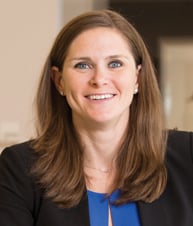Extracted from Law360
“Nuclear” and “thermonuclear” are no longer terms relegated to the realm of science. Although the term was only coined in the last few decades, nuclear verdicts — awards exceeding $10 million — are now commonplace, with verdicts trending toward the thermonuclear, i.e., awards exceeding $100 million.
Since the beginning of October 2023, there have been at least 22 nuclear verdicts in state and federal tort cases, and over half of those verdicts can be considered thermonuclear.
Just a few weeks ago, in McKivison v. Monsanto Co., a Philadelphia jury awarded a single plaintiff $2.25 billion in a failure-to-warn mass tort case involving Roundup weedkiller after a little over an hour of deliberation.
There are three interconnected principles rooted in human psychology that every defense attorney should focus on when communicating with the modern jury — trust, connection and simplicity.
Going Nuclear After the COVID-19 Pandemic
While many in the legal community believed that the negative experience of the COVID-19 pandemic would check nuclear verdicts, the opposite has proven to be true.
The mentality that drives nuclear verdicts — an us-versus-them mentality, with ordinary citizens pitted against big, wealthy corporations — became more deeply rooted in the minds of jurors because of the pandemic and the surrounding political climate.
Corporate distrust and disillusionment ran rampant in the COVID-19 era, in part because the populace believed that many corporations were not doing enough or were acting solely to profit off the pandemic.
As a result, some plaintiffs attorneys were able to amplify their oft-used arguments based on reptile theory,[1] resulting in additional and larger nuclear verdicts against corporations. Unsurprisingly, these tactics worked.
Reptile theory and similar techniques often play into jurors' existing feelings of insecurity and malaise, giving rise to huge verdicts. This phenomenon, plus the increased use of third-party litigation funding — meaning plaintiffs attorneys have less to lose — and the normalization of large verdicts and awards, has allowed plaintiffs attorneys to ask for and receive astronomical jury awards.
In this era of nuclear and thermonuclear verdicts, it is particularly important that defense attorneys act intentionally when communicating with juries and do everything they can to eliminate the us-versus-them mentality that often pits the jury against the defendant.
3 Key Principles
1. To build trust, don't act like you're acting.
At its core, a trial should be a story — one that is cohesive, clear and compelling — and without trust, a jury will not believe a defendant's story. A core psychological tenant of establishing trust is first demonstrating a commitment to honesty, humility and agreeableness.[2]
From the moment an attorney interacts with the jury panel, these objectives should be at the forefront of their mind. A trial attorney must be authentic to themselves and keep promises they make during opening statements. A jury will not trust and believe someone who is perceived to be playacting or who is consistently breaking promises.
It is equally important that the jury trust the company. For that reason, the face of the company at trial need not be the smartest person or the person with the most personal knowledge of the conflict. The face of the company should be the person who presents the most authentically.
Finally, because bet-the-company tort litigation is often expert-driven, it is crucial that the jury trust the expert and the science they are conveying. Again, finding an expert who presents authentically is more important than finding the most highly credentialed person.
And during voir dire, attorneys should include questions to determine which, if any, venire members are inherently distrustful of science, especially when delivered by an expert witness.
If the focus is placed on selecting the most trustworthy presenters, each interaction with the jurors will increase trust and willingness to believe the defendant's case. And it is much more difficult for a jury to levy a large damage award against people and a company that it trusts.
2. Rely on trust to build connection.
In addition to focusing on trust, the players at trial must focus on building a connection with the jury. Trust and connection are interrelated; without trust, you cannot form a genuine connection, and without a connection, you cannot build trust.
But to build each, you must emphasize something different: While authenticity is the foundation of trust, relatability is the foundation of connection.[3]
Connection eliminates the us-versus-them divide that drives nuclear verdicts. When building connections between the trial attorney, the defendant company, the expert and the jury, consider the venue.
Let's say the suit is pending in a rural area in state court. While a BigLaw attorney from a big city might have the most experience with complex litigation and know the case the best, they are likely the least relatable to the jury and may not be able to connect with them. Local counsel and even hyperlocal counsel should be involved at trial.
One of the worst things a defendant can do in a case like this is to have a big-city lawyer do all the talking at trial, and have local counsel sitting at the table doing nothing.
Why? You are marginalizing a member of the jury's community, and you are doing it right in front of them, which only amplifies the us-versus-them mentality that drives nuclear verdicts. If that is the plan, you are better off not having local counsel at all.
The company witness and the expert should likewise be relatable. The company witness and the company need to be perceived not as cogs in a corporate monolith, but as a group of people from the same community as the jurors.
Select a witness who is as local as possible or who has the same accent. The same principle holds true for experts. As smart and wonderful as some Harvard University and Yale University professors are, jurors in Georgia are more likely to connect with someone who went to the University of Georgia and grew up in a similar community.
In sum, if the people presenting your story are relatable and connect with a jury, you are less likely to fall prey to a nuclear verdict, because no one wants to punish a friend or someone who could just as easily be them.
3. The goal is simple.
The final core principle is simplicity. Simplicity is key to building trust and connection because a jury will not trust and connect with what they do not understand.
Simplifying a story for trial is not a new or novel concept. Most trial lawyers know how vital simplicity is, but those same trial lawyers are often unable to jettison overly detailed presentations because they have lived with the case for so long or are too focused on rebutting every possible point of the opposing side.
When we say simple, we mean really simple. Notably, among Americans aged 16 to 65, 52% are considered below proficient in literacy, with many of these individuals struggling to draw inferences or combine multiple sources of text.[4]
The trial attorney, company witness and expert should all use simple visual aids. They should also each focus on using simple language and eliminate multisyllabic, technical jargon when at all possible. Not only might the jury not understand the words, the attorney, witness or expert will seem inauthentic and unrelatable.
If technical terms are unavoidable — as they usually are in complex tort cases — have the trial lawyer explain, in a nonpejorative way, what the words mean in the opening statement. Most people like learning new things and will get excited about learning new words and concepts.
Finally, lawyers and all witnesses should use analogies when possible, or use commonplace examples from everyday life when trying to communicate complex concepts. But — and this is a big caveat — those analogies and examples must be tested first. Use a mock jury or focus group to see if the analogy or example is relatable and understandable.
The only way to make a complex concept more difficult to understand is by using an analogy or example that does not make sense.
In short, people do not like what they do not understand. If a jury does not understand your story because it is overcomplicated, they are more likely to award a nuclear verdict.
Teamwork Makes the Dream Work
Because a jury is made up of six to 12 individuals, figuring out how best to communicate with them is case-dependent and sometimes more art than science. However, focusing on the core principles of trust, connection and simplicity make it more likely that your team will appeal to the individuals who make up your jury.
Enlisting the help of a jury consultant to determine who a jury is most likely to trust, connect with and understand can be helpful. Jury consultants can also help you distill certain legal concepts that you have lived with for years down to simple bites of information that a jury can stomach.
But there is no replacement for a defendant and a defense team that is focused on trust, connection and simplicity. Those concepts can build a bridge between your client and the jury, and temper their desire to go nuclear.
[1] Reptile theory, as coined by David Ball and Don Keenan, relies on tapping into the “reptilian” region of the brain, which is biologically predisposed to avoid dangerous situations. Attorneys who utilize this approach in trial rely on creating safety concerns and distrust of corporations to convince each juror that whatever “big bad thing” the defendant company did could easily happen to them too. “What Attorneys Need to Know About Reptile Theory,” Tomson Reuters Legal, https://legal.thomsonreuters.com/blog/what-attorneys-need-to-know-about-reptile-theory/ (Sept. 19, 2022).
[2] Susan Krauss Whitbourne, “Why It's So Easy to Trust a Nice Person,” Psychology Today (Sept. 22, 2023), https://www.psychologytoday.com/us/blog/fulfillment-at-any-age/202309/why-its-so-easy-to-trust-a-nice-person.
[3] Sara Cleto & Brittany Warman, “Teaching with Stories: Empathy, Reliability, and the Fairy Tale,” 33 Wayne State Univ. Press 102 (2019).
[4] Program for the International Assessment of Adult Competencies, U.S. Skills Map: State and County Indicators of Adult Literacy and Numeracy, National Center for Education Statistics, https://nces.ed.gov/surveys/piaac/skillsmap/; Program for the International Assessment of Adult Competencies, Literacy, Numeracy, and Problem Solving TRE, U.S. Adults, 16-74 (Household and Prison), National Center for Education Statistics, https://nces.ed.gov/surveys/piaac/ideuspiaac/report.aspx?p=1-LNP-1-20133,20173-PVLIT-BMLIT-USI-RP_RP-Y_J-0-0-37.

